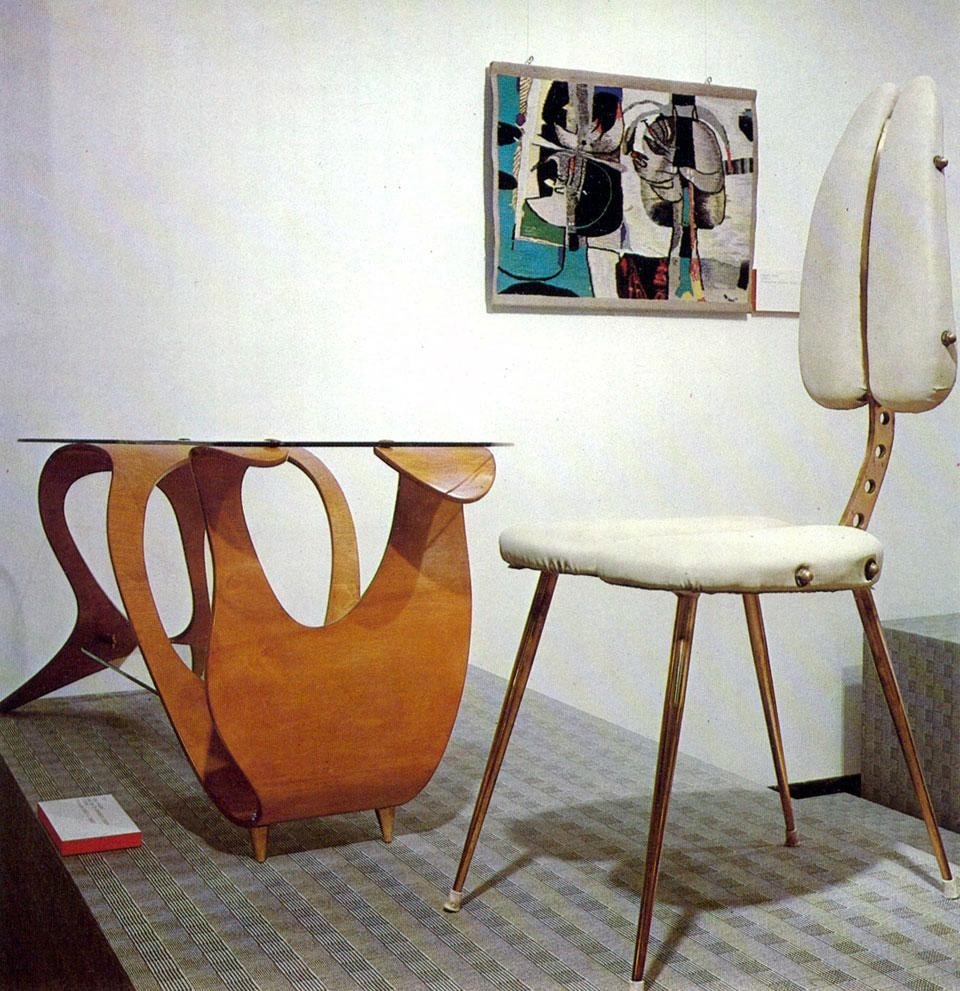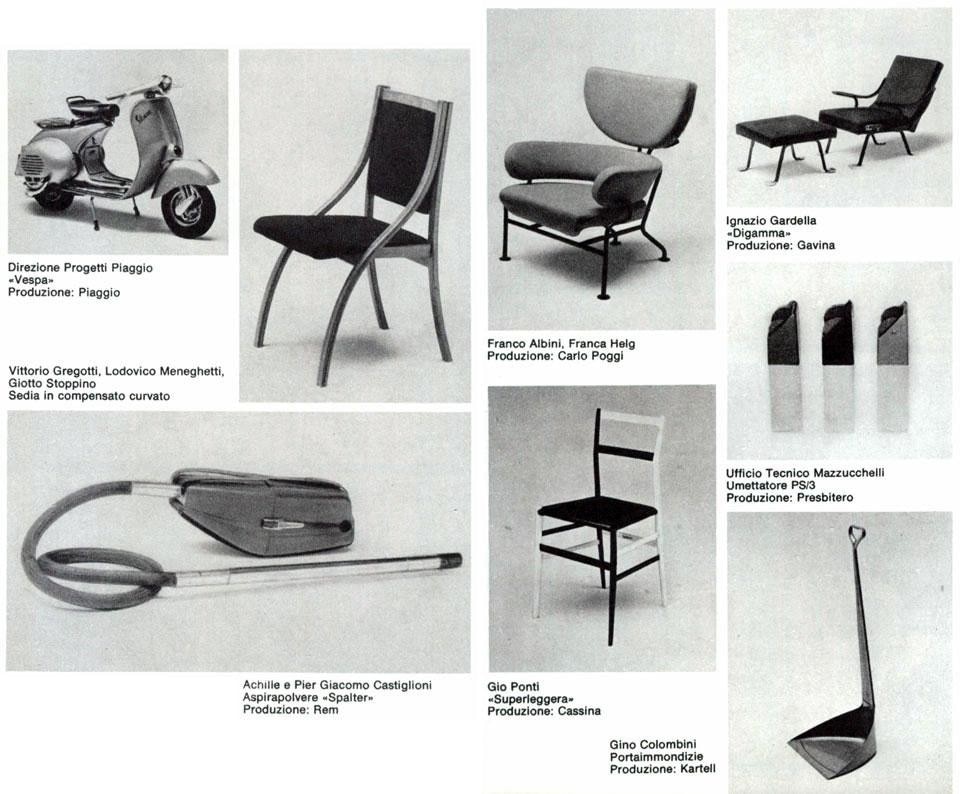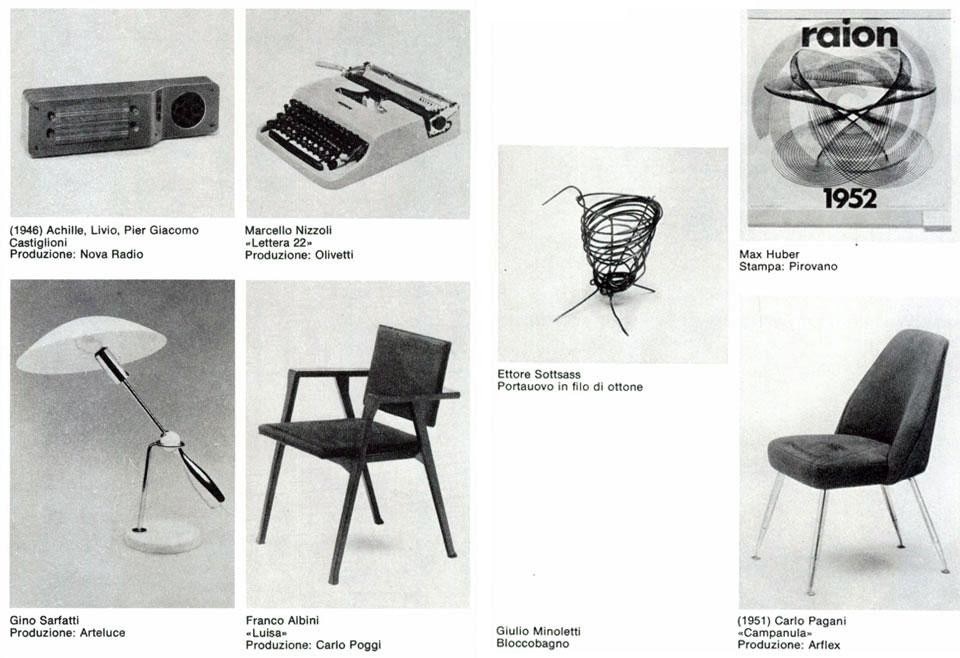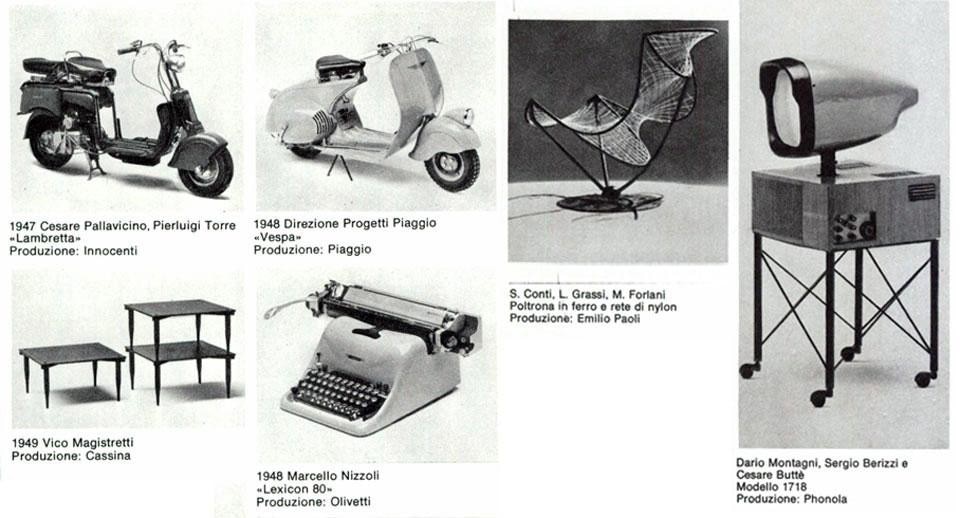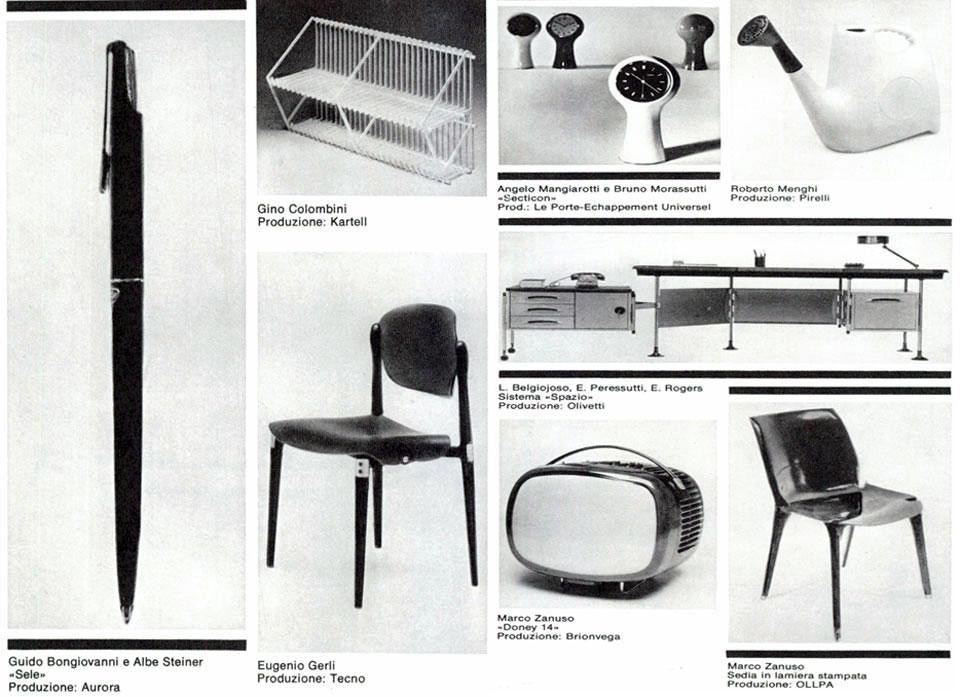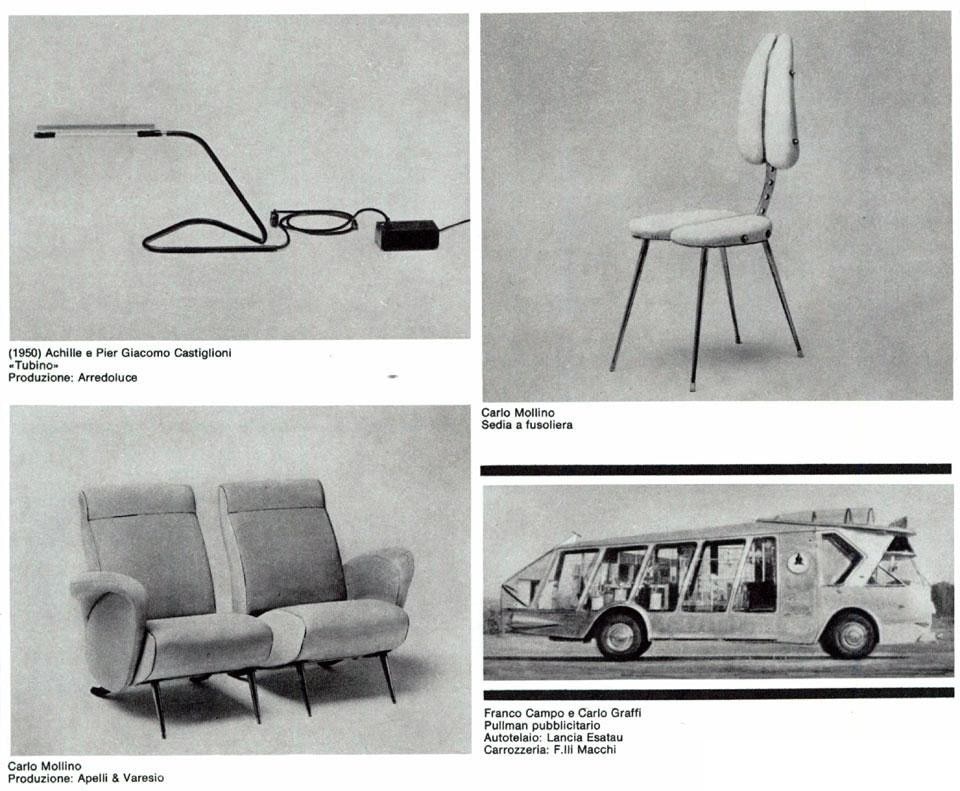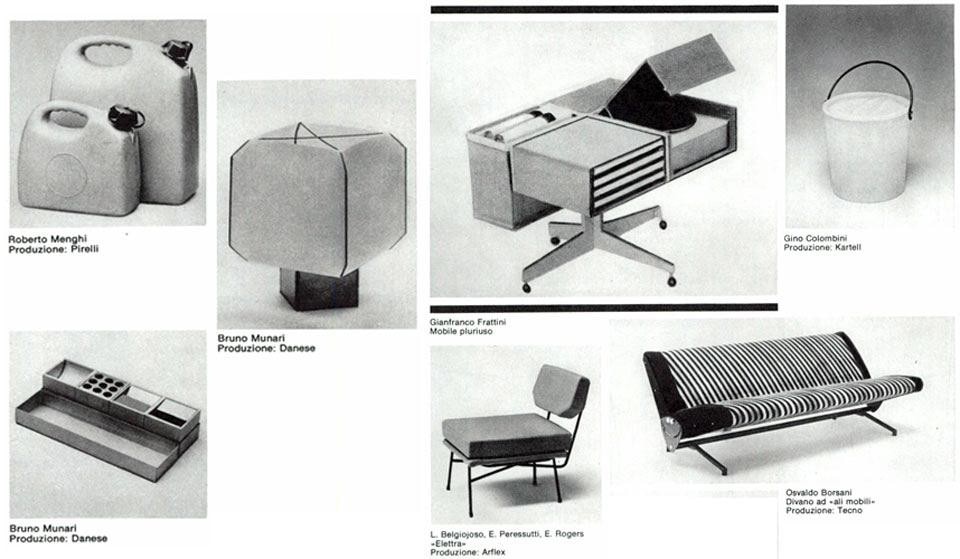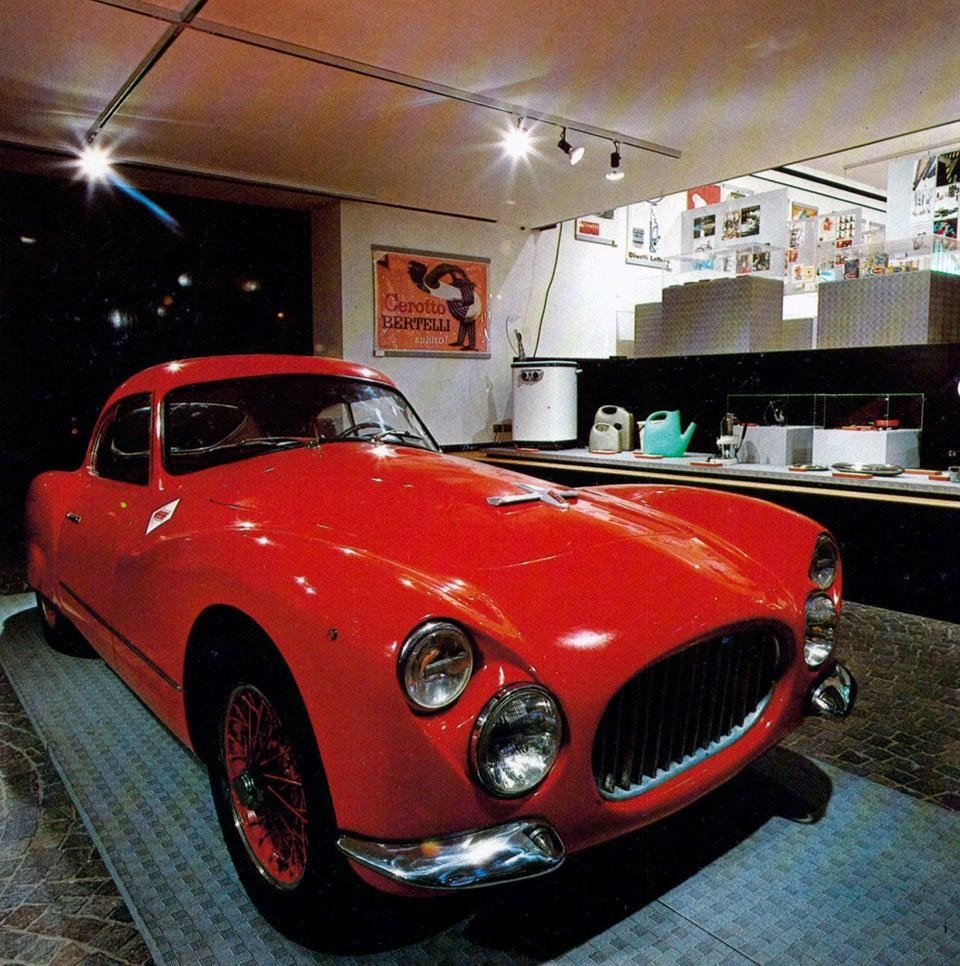Italian design in the 1950s
The exhibition of Italian design in the 1950s was held in Milan at the Centrokappa di Noviglio, from 26 September to 30 October. Spread over six sectors — industrial design, interior design, object design, graphic art, fashion and fabrics, reconstruction of interiors — the show was organized by the Centrokappa with the patronage of the Regione Lombardia and sponsored by the following firms: Anic, Arflex, Arteluce, Bassani Ticino, Cassina, Fiat, Kartell, la Rinascente, Olivetti, Piaggio, Poggi, Sambonet, Tecno and Zerowatt. On these pages we are publishing a few pictures of the interiors and works exhibited. In between the black stripes we have inserted works (published by Domus) that were not in the show but which we believe are important for a better understanding of the period in question. In brackets we have indicated the dates of publication in Domus.
We were almost resigned in recent times to the idea that civilised circles in Milan were incapable of turning their attention to the vast reservoir of cultural, social, environmental and industrial issues that design has helped and still is, directly or indirectly, helping to characterize and to evolve.
The exhibition of Italian Design in the Fifties has certainly not filled this gap. But it has at least made the design business and public opinion in general focus their attention on an industrial sector that has been with us and our developing society for quite a long time. Credit should be given to this exhibition and its sponsors for having positively made people sit up and rethink about this vast cultural and production sector which has grown up since the war — particularly in the Milan area — and gradually come to embrace cultural affairs within a wider social and national context.
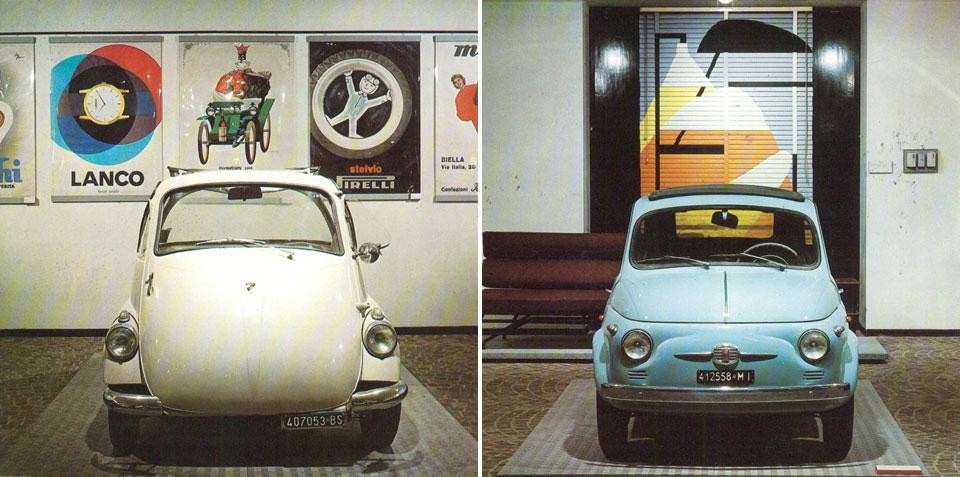
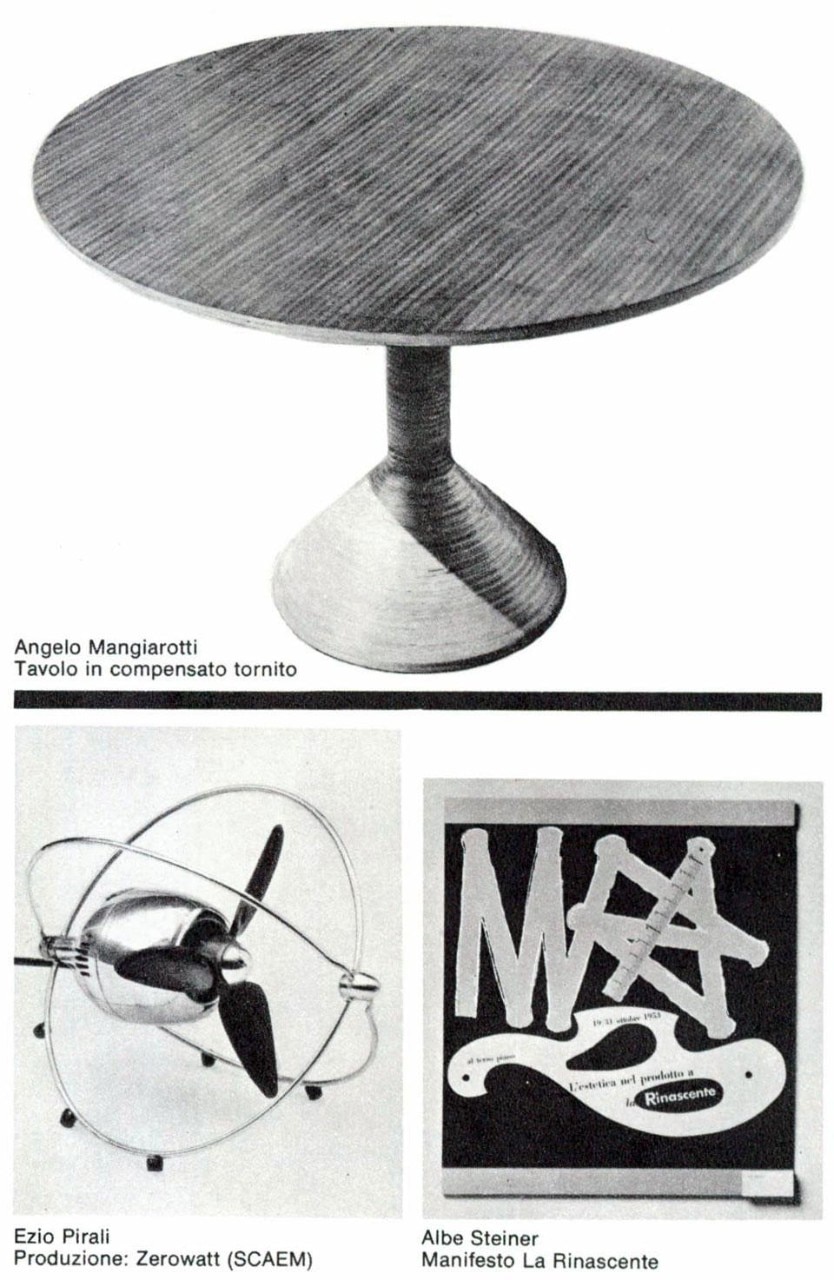
It should not be forgotten that all the designers of that time were also and primarily architects who, Iike Ponti, Viganò, Gardella and Caccia Dominioni, developed architectural models and design methods which they then transferred on a smaller scale into the designing of objects
